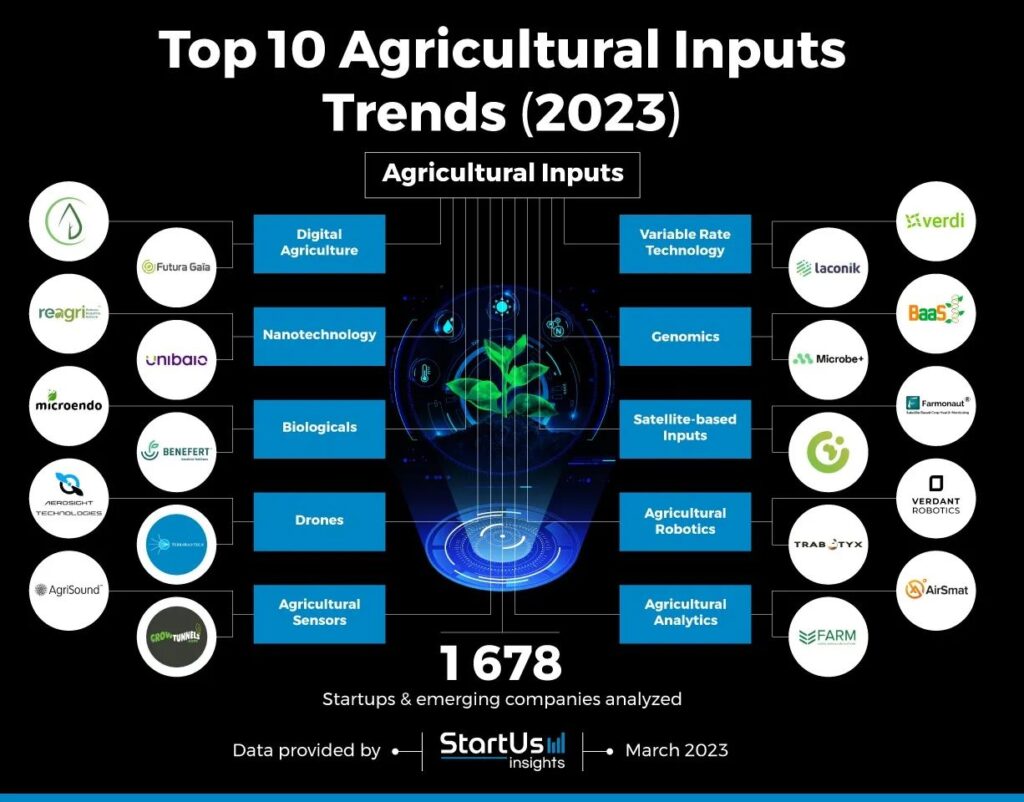“Black aphids can reduce crop yields by up to 50% if left unmanaged in agricultural fields.”
What Are Black Aphids? 7 Powerful Strategies for Control
Black aphids are a group of small, sap-sucking insects wreaking havoc across agriculture and forestry industries worldwide. Renowned for their rapid reproduction and a wide range of host plants, these pests threaten the growth and vitality of essential crops and trees. In this comprehensive guide, we explore the biology, damage mechanisms, and offer seven proven strategies for black aphids control. By integrating precise identification, prevention, and control practices, you can safeguard your yields and minimize losses.
With the rise of digital tools and satellite-powered precision agriculture, aphid infestation management is becoming more efficient. We’ll also introduce how Farmonaut enables real-time, data-driven action on your farm.
Identifying Black Aphids on Plants
Proper identification of black aphids is the first step in effective management. These insects exhibit unique features that distinguish them from other pest species, allowing for targeted intervention.
Physical Characteristics of Black Aphids
- Size: Adults are small, typically 1.5 to 3.1 mm in length.
- Coloration: Their color can appear dark olive green to black, sometimes with distinctive dark bands across the body.
- Legs: Usually light yellow with darker tips.
- Cornicles: Short and darker than the body, resembling tail-like structures.
- Nymphs: The immature forms tend to be lighter in color—from slate gray to reddish brown, depending on the species.
Identifying black aphids on plants requires checking both upper and lower leaf surfaces, shoots, and stems by sight. Infestations often start small but can escalate quickly due to exponential reproduction. Vigilance is crucial for early detection and successful black aphids control.
Common Species of Black Aphids and Their Impact
Several species of black aphids are prevalent across agricultural and forestry settings. Each one targets specific plants and causes characteristic symptoms:
- Black Bean Aphid (Aphis fabae): A major pest of beans, sugar beets, celery. Causes stunting, distorted growth, and can transmit various viruses.
- Black Peach Aphid (Brachycaudus persicae): Attacks peach and nectarine trees. Results in leaf curling, yellowing, and premature leaf drop.
- Black Cherry Aphid (Myzus cerasi): Targets cherry trees. Leads to leaf crinkling, curling, and growth of sooty mold due to honeydew secretion.
- Cowpea Aphid (Aphis craccivora): Infests beans, alfalfa, cotton, and more. Causes stunted plants and potential plant death.
“Integrated pest management can decrease black aphid infestations by over 60% compared to conventional methods.”
Aphid Life Cycle and Reproduction: Understanding Their Rapid Growth
A deep understanding of the aphid life cycle and reproduction is crucial for preventing aphid infestations in agriculture and implementing timely interventions.
Key Information on the Aphid Life Cycle
- Life Forms: Aphids occur in both wingless and winged forms, enabling quick dispersal.
- Reproduction: Females can produce offspring by parthenogenesis—without mating. This process yields live young (not eggs), resulting in rapid population explosions.
- Generational Turnover: Multiple generations may occur in a single growing season, with development from nymphs to adult in just days under optimal conditions.
- Overwintering: Some species lay overwintering eggs on plant stems or bark, hatching at the onset of spring.
- Dispersal: When populations grow or food is scarce, winged aphids develop and migrate to new plants, spreading infestations to a wider range of crops and trees.
This cycle underlines the importance of regular monitoring and rapid responses to new sightings on leaves and shoots.
Damage Caused by Aphids: Signs and Effects on Crops
Why are black aphids such a significant threat to agriculture and forestry? It’s due to their multifaceted modes of damage affecting both plant health and productivity.
Main Types of Black Aphids Damage
- Direct Feeding on Sap: Aphids feed by inserting their mouthparts into plant tissue, sucking sap. This weakens plants, leading to:
- Stunted growth
- Distorted leaves (twisting, curling)
- Wilted or yellow leaves
- Premature leaf drop
- Potential plant death in severe infestations
- Honeydew Secretion and Sooty Mold Development:
- Excess sugary honeydew falls on leaves and fruit.
- This sticky substance fosters sooty mold fungal growth—appearing as black layers on the plant.
- Sooty mold blocks light, decreasing photosynthesis efficiency and potentially causing more premature leaf drop.
- Transmission of Viruses:
- Aphids are notorious vectors for plant viruses—more than 50 types are spread by aphids globally.
- Disease symptoms range from leaf mottling and yellowing to complete crop failure.
- Virus-infected plants often cannot be saved, amplifying the economic stakes.
Signs of aphid damage on crops include curling and yellowing of leaves, sticky surfaces due to honeydew secretion, and visible black mold on the plant surface. Early detection enhances control success and is a cornerstone of integrated pest management for aphids.
7 Powerful Black Aphids Control Strategies
Proactive, layered management is the best answer to how to get rid of black aphids and reduce their impact on your crops. Here are the seven most effective, science-backed strategies:
1. Cultural Control Methods
- Crop Rotation: Regularly change the crop type in your fields to break the life cycle of black aphids. This reduces the buildup of populations season after season.
- Pruning Infested Plant Parts: Remove severely infested leaves, shoots, and stems to physically eliminate aphids, especially at the infestation’s start.
- Weed Management: Eliminate weeds in and around the crop area, as these can serve as alternative hosts and boost aphid survival.
- Timely Planting: Early planting can help crops outgrow early-season aphid attacks.
Farmonaut’s satellite-based crop health monitoring allows users to detect high-risk areas, plan rotations, and optimize field interventions for effective aphid control.
2. Biological Control of Aphids
- Encourage Natural Predators: Attract or conserve beneficial insects like ladybugs, lacewings, and hoverflies, which are voracious aphid predators.
- Introduce Predators: Release commercially available predators or parasitic wasps for targeted reduction of aphid numbers.
- Avoid broad-spectrum insecticides to maximize preservation of beneficial species.
Farmonaut’s advisory modules can help identify when and where to deploy biological control for maximum effect.
3. Chemical Control with Selective Insecticides
- Use Selective Insecticides: Choose products that minimize harm to beneficial species. Always adhere strictly to label instructions to prevent resistance and residue issues.
- Insecticidal Soaps and Oils: Apply potassium salts of fatty acids or paraffinic oils, which suffocate and kill aphids on contact and reduce honeydew secretion.
Always consider threshold-based decision-making: only spray when aphid numbers exceed economic injury levels, as found in most IPM programs.
4. Physical Control Methods
- Water Sprays: Dislodge aphids from plants with a strong jet of water. Especially useful for small garden plots or young trees.
- Sticky Traps: Place yellow sticky traps near crops to capture flying aphids, helping to both reduce adults and monitor for future outbreaks.
5. Integrated Pest Management for Aphids (IPM)
- Combine multiple control methods in a systematic, data-driven approach.
- Monitor fields regularly for early signs of infestation using visual observation, sticky traps, and advanced technologies like remote sensing.
- Alternate different intervention methods to minimize resistance development.
- Document all interventions and adapt programs each season for ongoing improvement.
Structured IPM reduces input costs, maintains beneficial insect populations, and preserves environmental health while boosting crop yields.
6. Technological Monitoring and Precision Alerts
- Leverage satellite imagery, remote sensors, and mobile apps to detect crop stress and aphid “hot spots”. This allows precise timing and targeting of interventions.
- Farmonaut’s Agro-Admin App empowers large-scale managers to monitor entire plantations or forestry blocks for signs of aphid outbreaks.
- Early warnings and AI-powered alerts enable rapid response before infestations cause significant damage.
Such digital systems not only help with aphid control, but also improve resource use, sustainability, and crop traceability (see Farmonaut Traceability Solutions).
7. Environmental, Carbon, and Resource Management
- Minimize fertilizer and irrigation misuse, as lush, over-fertilized plants are more attractive and susceptible to black aphids.
- Use Farmonaut’s Carbon Footprinting solutions to track input use and environmental impact while fighting pest outbreaks.
- Practice crop and resource management to boost plant resistance and long-term soil health, creating a less favorable environment for pest populations.
Comparison Table of Black Aphid Control Strategies
| Strategy Name | Method Description | Estimated Effectiveness (% reduction in infestation) |
Application Frequency | Estimated Cost (per acre) |
Environmental Impact | Organic Farming Suitability |
|---|---|---|---|---|---|---|
| Cultural Control | Crop rotation, pruning, weed management, timely planting | 30-60% | Seasonal/As needed | Low | Low | Yes |
| Biological Control | Introduction/conservation of beneficial insects (ladybugs, lacewings) | 35-70% | Periodic (esp. early season) | Medium | Low | Yes |
| Selective Chemical Control | Insecticides, oils, soaps | 60-90% | As needed (based on scouting) | Medium-High | Medium-High | Some (soaps/oils) |
| Physical Control | Water jets, sticky traps | 15-40% | Frequent/As needed | Low | Low | Yes |
| Integrated Pest Management (IPM) | Combined, data-driven mix of all strategies | Up to 95% | Continuous | Medium | Low | Yes |
| Technological Monitoring | Satellite, sensors, app-based alerts | 15-50% (indirect, supports targeted actions) | Continuous/Regular | Low-Medium | Low | Yes |
| Environmental & Resource Management | Reduce excessive fertilization, water management, carbon tracking | 15-35% (indirect, increases plant resilience) | Seasonal/Periodic | Low | Low | Yes |
Integrated Pest Management for Aphids (IPM): Holistic Approaches
Integrated pest management for aphids (IPM) is an advanced, science-centered approach uniting cultural, biological, chemical, and physical methods. This approach stands out because it prioritizes reducing aphid populations economically and sustainably, while minimizing disruption to the agro-ecosystem. Here are IPM essentials:
- Regular Monitoring and Early Detection: Frequent field scouting, the use of sticky traps, and advanced solutions like satellite-based health imagery (as provided by Farmonaut) help catch infestations at a manageable stage.
- Threshold-Driven Action: Only intervene with chemical or more aggressive control measures when aphid numbers threaten economic thresholds for crop loss.
- Rotate Control Methods: Rotate insecticides with different modes of action and integrate mechanical, biological, and environmental controls. This delays resistance and offers long-term suppression.
- Recordkeeping: Document aphid counts, treatments, and field history to refine protocols year over year.
Studies show that integrated pest management for aphids reduces infestations by over 60% compared to routine chemical use alone, also leading to healthier, more resilient crops.
How Farmonaut Empowers Farmers Against Black Aphid Infestation
As precision technology evolves, Farmonaut delivers robust, affordable solutions for aphid infestation management and broader integrated crop protection. Our mission is to put data and digital tools in the hands of every farmer, regardless of scale or location.
Core Farmonaut Features for Aphid and Pest Management
-
Satellite Crop Health Monitoring: We provide real-time multispectral imagery via our mobile and web apps.
Use Normalized Difference Vegetation Index (NDVI), soil moisture maps, and other data layers to spot plant stress areas linked to aphid outbreaks. - AI-Based Advisory: Our Jeevn AI system analyzes satellite and weather data to deliver actionable aphid management tips, such as when to introduce beneficial insects or apply selective chemicals.
- Blockchain Traceability: Maintain transparent supply chains to enhance product value, especially for organic and export crops where pest/disease management is crucial.
- Resource Management: Enable efficient fleet tracking, water and fertilizer planning to make your farm less prone to aphid surges caused by over-fertilization and poor irrigation.
- Crop Loan and Insurance Support: With satellite-based crop verification, access timely loans and insurance based on actual farm condition and mitigate risks from aphid outbreaks.
- Carbon Footprinting for Sustainable Pest Control: Apply our carbon tracking software to reduce environmental damage and optimize aphid management actions for both profit and sustainability.
Farmonaut’s subscription platform is accessible via Android, iOS, and Web applications, and also via an API for advanced integration.
Developers can get started with our API developer docs for building digital pest management tools.
Frequently Asked Questions (FAQ)
Q1: What are black aphids and why are they a major concern in agriculture and forestry?
Black aphids are small, sap-sucking insects distinguished by their dark coloration. Their rapid growth and ability to infest a wide range of plants cause significant damage, including stunted plant growth, sooty mold from honeydew secretion, and virus transmission—leading to substantial crop losses.
Q2: How do I know if my plants have aphid damage?
Common signs include curling or yellowing leaves, sticky honeydew on surfaces, black sooty mold, and weakened or stunted plant appearance. Close observations on the underside of leaves are important for early detection.
Q3: What is the most effective way to control black aphid infestations?
The most effective approach combines multiple strategies—cultural, biological, chemical, physical—as part of an integrated pest management program. Regular monitoring and early action are fundamental.
Q4: Can I use organic methods to manage black aphids?
Yes. Cultural, biological, and certain physical methods are suitable for organic farming. Use of beneficial predators, insecticidal soaps, and crop rotation supports organic pest management.
Q5: How can technology assist in black aphids control?
Tools like Farmonaut’s satellite imagery, remote monitoring, digital recordkeeping, and AI-driven advisories help promptly detect, track, and treat aphid outbreaks, making pest management more efficient and data-driven.
Q6: Where can I download the Farmonaut app?
Conclusion: Building Resilience Against Black Aphids in Modern Agriculture
Black aphids present a persistent threat to crops, forestry, and plant-based ecosystems due to their ability to reproduce rapidly, transmit viruses, and disrupt plant growth through mechanisms like honeydew secretion and sooty mold development. Effective black aphids control is not based on a single solution, but on the integration of various methods—cultural, biological, physical, and tailored chemical approaches, all harmonized within an integrated pest management (IPM) framework.
With the support of cutting-edge digital farming tools like those offered by Farmonaut, farmers can harness real-time monitoring and AI-powered advisories to prevent, detect, and contain aphid infestations—all while reducing input costs and advancing towards sustainability. Early intervention, consistent monitoring, and a holistic, data-driven approach empower growers to protect their plants and secure harvests.
Farmonaut stands at the forefront of global precision agriculture by providing affordable and easy-to-use digital solutions for aphid infestation management and more. As we continue to innovate, our commitment is to empower every farmer, agribusiness, and stakeholder in the agricultural value chain to achieve higher yields, sustainability, and resilience against pests.
Take your integrated pest management to the next level with Farmonaut:
- Access real-time satellite crop monitoring via app
- Obtain precision field data and AI-based recommendations
- Meet certification and traceability goals with blockchain-based platforms (learn more)
- Optimize inputs, reduce carbon footprint, and qualify for climate-smart finance
- Enable growth, sustainability, and pest resilience—no matter your scale

















